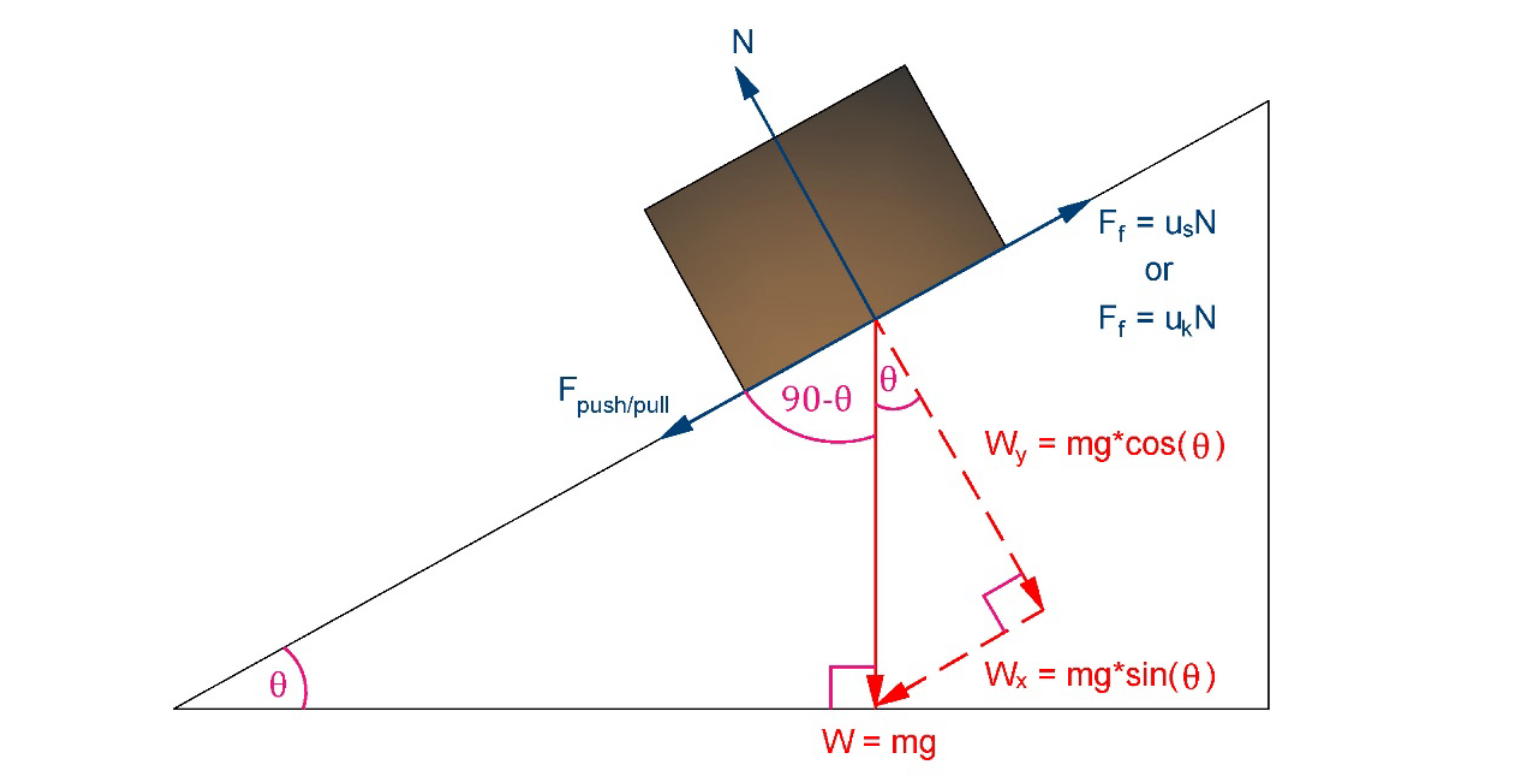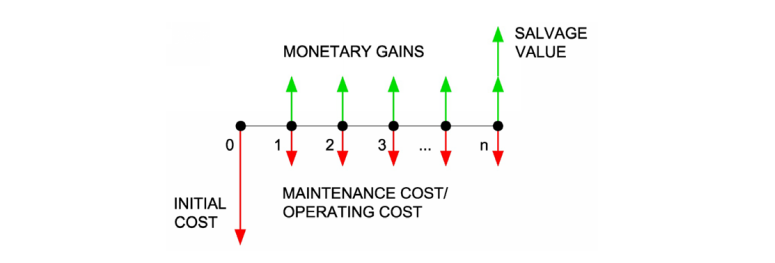You?ve just applied to take the Mechanical FE exam, now where do you go from here? Review these tips to help you pass the Mechanical FE exam the first time around.
Where do I start?
The best thing you can begin with is gathering the three most important resources that will guide you in your studying. By cross referencing these three materials, you can gain the advantage on how and what you should be studying.
1. The NCEES Exam Specifications ? An outline of topics to be tested
Use the exam specifications to focus your studying. Do not deviate from any of the topics listed in the outline, as this will be a waste of your time. This outline will also give you an idea of how many questions will be tested on each topic and therefore which topics you should study more.
2. The NCEES FE Reference Handbook ? The only reference you will have during the exam. Download a free pdf version from your MyNCEES account.
The NCEES FE Reference Handbook is about 250 pages of references and equations. This is the only resource you will be allowed to use during the test. It is to your benefit to understand how this handbook is formatted, where important tables and graphs are located, and how to actually use the equations in the handbook. Since this is the only resource that will be given to you, the solutions to the questions will most likely be in this book. Looking at it another way, the concepts that will be tested can be identified in this book. Therefore, you can narrow down the questions that could be tested by cross referencing the exam specifications with the equations in the handbook.
3. The NCEES Practice Exam ? This full length practice exam will give you the best idea of what the actual exam questions will be like.
This exam is written by the test maker and will therefore be the most similar of all the practice exams out there. Do this exam to understand the level of difficulty of a typical problem and the language of the questions. Cross reference this practice test with the exam specifications to determine which areas you are weak in, not only in being able to find the solutions, but also in speed. Finally, see how the NCEES FE Reference Handbook is used in solving the problems.
By spending a lot of time with these three resources, you should have a much greater understanding of the types of questions that will be asked on the exam. For example, if you analyze the tools/equations they are giving you in the Handbook, it will give you an idea of the types of questions that you will be expected to solve. This may take a lot of time and analysis, but it will be worth it. This analysis is the same method used to create the technical study guide and practice exam which is discussed later in this article. With this analysis you will be able to concentrate your studying in a way that will optimize your chances of passing and reduce the amount of time you need to study.
What is the exam like?
The total exam period is 6 hours. The actual time you have to answer 110 questions is 5 hours 20 minutes, with an optional 25 minute break between the halfway point. The halfway mark is based on the number of questions and not the time. Once you submit the first half of the questions you are unable to go back to them. Based on the number of questions and the available time, each question should average you 2.9 minutes. This means the questions can?t be too difficult, maybe one or two step solutions. Additional information on the exam format, policies, permitted items, and more information about the exam are available on the NCEES Examinee Guide. More background information on the exam can be found in this article.
Computer Based Test (CBT)
The exam is computer based, the NCEES FE Reference Handbook will be provided as a searchable pdf, and you will be given writing tools to work out your problems. There are two sessions, each contains about one half of the total problems. As you work within each session, you will be able to flag questions that you would like to return to. There is a countdown timer on the corner of the screen that displays your remaining time. You may submit the first session at any time, but you are responsible for making sure you have enough time for the second session. Review this Pearson VUE demo posted on the NCEES website to get a feel of how the exam will be displayed.
FE Exam Computer-Based Test demo :: Pearson VUE
Online demonstration of the computer based test format for the FE exam, provided by Pearson VUE.
pearsonvue.com
Question Types
Most of the questions will be multiple choice (A thru D), but based on the NCEES Examinee Guide, there are four other possible question formats: multiple answers, select by clicking on a figure, graph, etc, drag and drop, and fill in the blank. See the video below produced by NCEES for an example of these types of questions.
In addition to multiple choice answers, the computer based test will also have alternative question types as displayed in this video. Multiple choice answers will still be the most common.
How much should I study?
This will depend on how fresh the material is for you. The best way to gauge this is to do the NCEES practice exam. If you?ve done well in your engineering courses and you just graduated from college, 8?16 hours of studying may be enough for you. This has been the case for some, but again, even if you feel confident, make sure you are still familiar with the NCEES FE Reference Handbook. If you need a refresher of the exam topics, which most people do even right out of college, 40?80 hours may be a more reasonable time. Remember that the questions are answerable in less than 3 minutes. If you understand the concepts and know how to apply the equations, you are in good shape. If it?s been a while or you know you struggled in some of the Mechanical courses during school, you may want to take a couple months to go through the material. A good average study time is 100 hours. In general, if you can answer 70?75% correct on the practice exam, that is a comfortable score. The exam itself is scaled based on the difficulty of the exam and there is no published passing score, but the general consensus is around 50?55% correct of the total questions.
When studying, look at the topics and the number of problems that are tested on each topic. You should be able to breeze through some sections, like ethics, which only require some reading beforehand, and mathematics and economics, which will include basic problems. The first 6 sections can be reviewed fairly quickly. However, if you aren?t getting these types of problems, or if the material in the handbook seems unfamiliar to you, make sure you figure out why. These are the easy questions that can bring your overall score up. The most focus you will likely need during your studying are the topics that have the greatest amount of questions and are also the more difficult sections: statics, dynamics, mechanics, material properties, fluids, thermodynamics, heat transfer, and mechanical design etc.
How can I increase my chances of passing?
Time is of the essence on the FE exam. You have an average of less than 3 minutes to solve each problem. Below are some useful tips.
NCEES Handbook
The electronic, searchable function of the handbook will help you to find equations quickly on the test. See the video below for how the search function works during the actual exam.
The hardest part is knowing how to apply the equations, which is where your studying and understanding of concepts come into play. Because time is limited, being familiar with the handbook beforehand is essential.
- Format: The first few sections cover topics that span all disciplines, beginning with common unit conversions and constants, ethics, mathematics, and statistics. The chapters then go into various subjects, such as chemistry, materials, statics, thermodynamics, etc. Finally, the last few chapters provide references specific to various engineering disciplines. It is important to know that some equations or tables may be located within other disciplines, such as civil, chemical, electrical, and industrial engineering. Before studying, go through the entire handbook. Realize that the index will not be provided to you during the test, only the search function. Before taking the actual test, read through the entire ethics section. It will be more difficult to do a search for these types of questions and will be time consuming to read through this section during the test.
- Equations: The equations are provided in a generic format, which excludes any units or conversion factors. This is not as much of a problem for questions given in metric units, which, based on the practice exam, a lot of the test will use. However, for English units, this can complicate things. To overcome this, be sure you write out all your units and that they cancel out to the unit of your final solution. You must also be aware of when different equations apply to different conditions or variables. For example, a standard deviation equation in probability and statistics is available for a population and for a sample. You must understand that population means all test subjects or objects are included in the standard deviation, while a sample is just a portion of the entire population.
- Practice: When doing practice problems, be sure to only use the NCEES FE Reference Handbook. This is the best way to become more familiar with where everything is and understanding the variables in the equations. As you practice, learn what key words in the search function works best for the equations you are looking for.
Tricks to Answering Questions
Below are some tips on the exam questions to prevent you from getting tricked into the wrong answer.
- Unnecessary Information: The question maker may throw in irrelevant information to test how well you understand the concepts. Read the question carefully to prevent from being misled.
- Deceiving Answers: The multiple choice options will many times include answers derived from possible common errors, like forgetting to convert inches to feet or missing a constant in an equation. Even though you get an answer that is listed as one of the choices, it is still a good idea to check your answers, time permitting. Again, always check your units.
- Most Nearly: Some answers will be presented as ?most nearly.? This means, ?which answer is closest to the actual solution.? NCEES uses the term ?most nearly? for to account for rounding differences and to also test your confidence in your solution.
- Do not Over-analyze: Since time is limited to less than 3 minutes per question, the solution is not intended to be complicated. Look for the most straightforward path to the answer and resist the urge to over-analyze the meaning.
- Answer the questions you know first: It is important not to spend too much time on one question. Answer the questions you know first and mark the ones you are unsure of or need to do a bit more research on, then come back to them later. The more questions you can answer correctly, the better. Skipping the ones you don?t know allows you to get to the ones you do. In the meantime, another question or equation you encounter along the way may spark the solution.
- Answer all questions: There is no penalty for wrong answers. Before your time is up, make sure you have answered all questions, even if it is a guess.
Understand the Concepts
The concepts for the Mechanical FE exam are based on the fundamental engineering knowledge you received within the first three years of college. It does not go into more higher level, focused mechanical subjects. There will even be some qualitative questions to test this. You should thus have a basic understanding of the concepts used in the tested topics. Find a good resource that will help you navigate your studying through the topics. The next section provides a list of resources.
Also remember that the questions need to be solved within less than 3 minutes, so the solution process won?t be as difficult or as detailed as the homework you received in school. Instead, the harder questions will complicate the scenario of common problems and the only way to know where to begin is if you understand the concept. The solution, however, will still be one or two steps. As you review the NCEES FE Reference Handbook, ask yourself if you understand the concepts behind the provided equations, e.g. conservation of energy, moment, impulse-momentum, equilibrium, various types of stresses.
Do Practice Problems
Understanding the concepts is the basic layer you need to pass the exam, but the best way to check your understanding, to familiarize yourself with the reference manual, and to really ingrain the concepts is to do practice problems. In doing so, check your average speed and review any equations in the handbook that don?t quite make sense. You should be fluent in how the handbook relays its information.
Below is a recommended list of practice problems and exam prep material. Of course, the two main resources are the NCEES practice exam and the NCEES reference handbook. The other materials are there to help focus and guide your studying.
- FE Mechanical Practice Exam , by NCEES ? $29.95, paperback
- FE Reference Handbook, by NCEES ? Free Download from MyNCEES account
- Mechanical FE Practice Exam & Technical Study Guide, by Kauwale ? $40, electronic. This book contains the analysis that was previously discussed in the introduction. It uses this analysis to give you what you need to study.
- Free Online Mechanical FE Study Material, by Kauwale
- FE Mechanical Practice Problems, by Lindeburg ? $99 on PPI website, paperback
- FE Mechanical Review Material, by Lindeburg ? $149 on PPI website, paperback
Each book has their strong and weak areas. There have been reviews where some topics, such as controls and heat transfer are insufficient in the PPI book. The Engineering Pro Guides book explicitly covers all exam topics and is meant to be focused, concise, easy to understand and affordable, but may miss some fine detail that PPI covers.
Memorize Typical Conversions/Factors
Again, speed is of greatest importance, so the less you need to look things up, the better. Here are some key conversions you should know, either by memory or being able to use your calculator efficiently to perform.
- Density of Water, ? = 1000 kg/cu = 62.4 lbf/cu.ft = 8.34 lbf/gal.
- Specific Gravity of Water, ? = 1
- ?R = ?F + 460
- ?K = ?C + 273
- 1 psia = psig + 14.7
- 1 bar = 10? Pa
- Gravity, g = 9.81 m/s = 32.2 ft/s
- Force Unit Conversion Factor gc = 32.2 lbm-ft/lbf-s2 **Knowing how to use this conversion factor is very important in English units. Make sure you know how to convert lbm to lbf to slugs.**
Memorize Basic Equations
Some equations are so commonly used that you will automatically remember them. Below are a few equations that you should already be familiar with.
- F = ma (Force)
- F = k?x (Spring Force)
- M = r x F (Moment)
- x(t) = x? + v?t + a?t (Particle Position)
- W = Fd (Work)
- KE = mv (Kinetic Energy, Particle)
- PE = mgh (Potential Energy, gravity)
- m?v?+m?v? = m?v??+m?v?? (Impact)
- ? = P/A (Stress, Axial)
- ? = ?L/L? (Strain)
- ? = Tr/J (Torsion)
- Re = ?vD/? (Reynolds? Number)
- P=?gh (Fluid Pressure, from height)
- P?/?+z?g+v?/2 = P?/?+z?g+v?/2+hf (Bernoulli?s Equation)
Know Where to Find Important Tables and Graphs
You should know where the commonly used graphs and tables are in the NCEES FE Reference Handbook. You should also be aware of the format, including the units and variables that are used in these tables. For example, in the English units section of the water properties table, density is given in terms of lbf-sec/ft? and not lbm/ft. Below is a list of important Mechanical tables you should be aware of and the section that they can be found in.
- Trigonomic Identities and Geometric Areas and Volumes ? Mathematics
- Derivatives and Integrals ? Mathematics
- Distribution Tables ? Probability & Statistics
- Area Moment of Inertia & Centroid ? Statics
- Mass Moment of Inertia & Centroid ? Dynamics
- Properties of Metals ? Material Science
- Modulus of Elasticity ? Material Properties
- Metal Densities ? Material Properties
- Coefficient of Thermal Expansion ? Material Properties
- Beam Deflection ? Mechanics of Materials
- Steam Tables ? Thermodynamics
- Specific Heat Capacities (Cp and Cv) ? Thermodynamics
- Thermodynamic Cycles ? Thermodynamics
- Psychrometric Chart ? Thermodynamics
- Water Properties ? Fluid Mechanics
- Moody Diagram/Roughness Coefficients ? Fluid Mechanics
- Drag Coefficients ? Fluid Mechanics
- MACRS Factors ? Economics
- Interest Rate Tables ? Economics
- Hazen-Williams Coefficients ? Civil Engineering
- Beam Analysis (additional) ? Civil Engineering
- Buckling K Value ? Civil Engineering
- Flow Chart Definition ? Electrical and Computer Engineering
- Mechanical Cycles and other applications ? Mechanical Engineering
Draw out the Problem
One method for minimizing careless errors is drawing out the problem.
- Free Body Diagrams ? Create free body diagrams to equate forces in various directions for statics and dynamics problems.
 Draw out free body diagrams
Draw out free body diagrams
- Cash Flow Diagrams ? For economics problems draw out the cash flow to visualize what year will encounter costs and gains.
 Draw out cash flow diagrams
Draw out cash flow diagrams
- Dimensional Analysis ? Use dimensional analysis to ensure all factors are accounted for. Prevent careless unit errors by writing out all units and cancelling them out until your final units are reached.
 Write out all your units
Write out all your units
Be Faster with your Calculator
Even though higher tech graphing calculators are not allowed during the exam, the calculators that are accepted are still fairly powerful. Of the calculators that are listed on the NCEES website, the TI-36X Pro and the Casio FX-991EX ClassWiz are favored. The TI-36X Pro has a good interface and able to store previous equations when shut off and turned back on again. The Casio FX-991EX ClassWiz has a fast processor. Both calculators can do matrices, determinants, integrals, polar/rectangular calculations without conversions, unit conversions, and more. Look up how to use the ?solve? function to automatically solve for algebraic equations. Store common constants in your calculator as a variable. You should know how to use these functions to improve your speed and accuracy. These calculators will also serve you well when taking the PE exam.
A backup calculator can be left in your locker and if all else fails, there is a calculator available on the computer.


